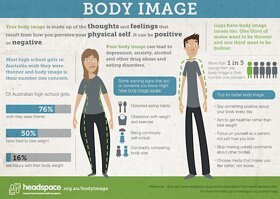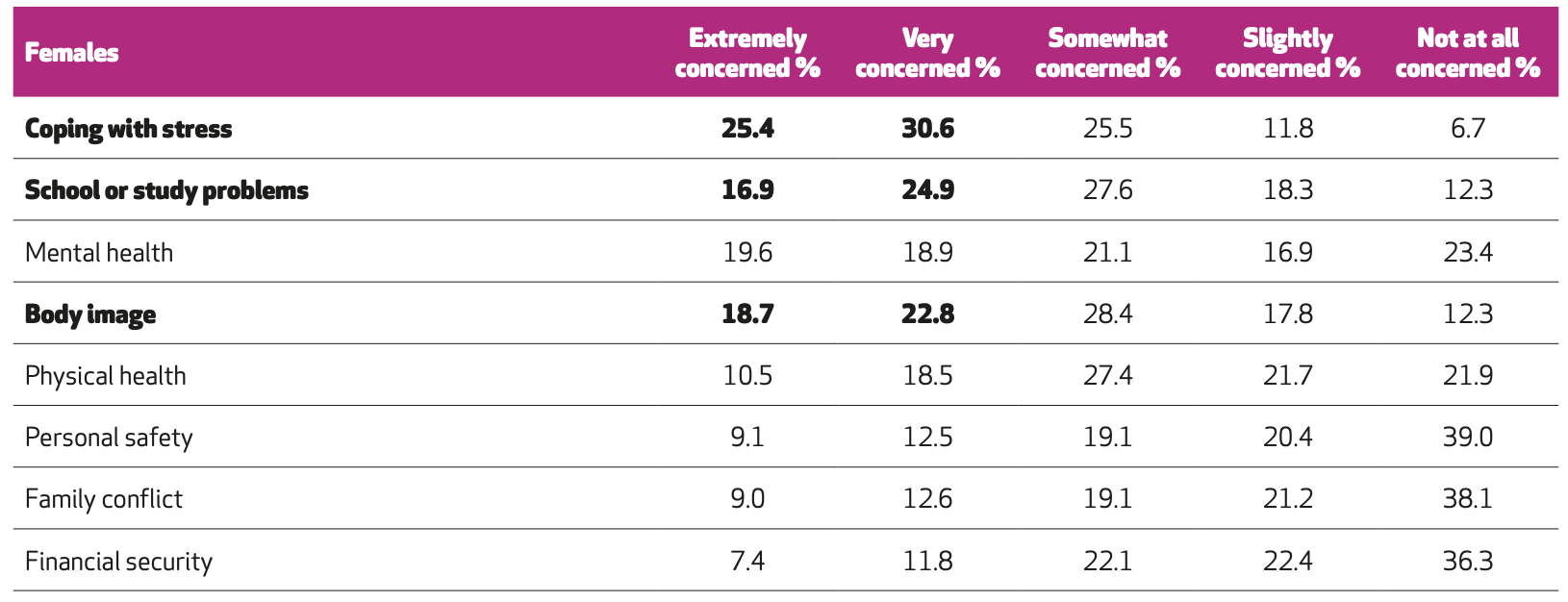Body Image Statistics And Solutions For Teenagers in Australia
Even after all the work we’ve done around young people and healthy body image, something isn’t working. A survey of mental health and wellbeing are still showing body image as a major concern for more than 30 percent of teenagers. This is not a good body image statistic. For some it may not seem like a huge problem because hey, doesn’t everybody wish we were all flawless like the media tells us we should be?
Introduction to Body Image
The above image given to us from our friends at HeadSpace. When you look at the adolescent brain and what is going on with the mind and body in puberty, you start to realize how this is actually a national mental health concern just like cyber bullying, because young people simply aren’t able to process things the way you and I can. We can look in the mirror and say “Oh, I wish I didn’t have these love handles” and then go on about our day.
But if you’re 13, 15 or 18 and that negative body image thinking has really taken hold, it’s going to follow you every minute, and it can easily lead to a full blown eating disorder. Here’s what being seriously unhappy with your body looks like, amplified by the teenage mind:
Symptoms of Bad Body Image
You’re going on about studying and careers, can’t you see none of that matters until I lose this weight?
Brittany says she doesn’t eat bread because it’s fattening, so I threw away my lunch
I don’t have a date for the dance, but that’s good. At least no one will see how weak and puny I look
It’s okay to eat another cupcake as long as I throw up right after
Why can’t everybody just leave me alone and stop talking about me? I’m fine
She’s staring at me because I’m so disgusting
I’m so alone ☹
If only I didn’t eat that. Stupid, stupid, stupid!
Nobody would miss me if I just wasn’t there anymore
These examples of distorted thinking may be commonplace, but they don’t lead anyplace good. It can potentially lead to OCD. If you are noticing a young person you know who seems to be acting differently – perhaps there’s been a dramatic weight loss, or their personality is gradually becoming more withdrawn, or perhaps you notice they can’t seem to concentrate like they used to – these can be signs of an eating disorder. Read the tips below and use them as a guide for discussing body image with your students. Remember, every emotion is a signal. Pick up on the signals and take action!
Australian Statistics
According to Mission Australia youth survey 2018 it's the 4th largest concern among teenagers with mental health, bullying and coping with stress at the top.
Females: Over 30% of females are personally concerned about their body image.
Males: 15.4% saying they are concern but fair more concerned with Physical health.
Aboriginal: 31.5% total with some saying "extremely concerned" 18.5% and "very concerned" 13.0
41.5% of Australian Girls Say they are Concerned with their Body Image.
These are all from the 2018 Youth Survey. If you compare to American Stats, Australians are actually doing better by an average of just over 10%.
I recently sent out a survey in March 2021 to Australian 100 random students myself to see if these stats were still within the percentages of the above survey. 93 Students filled the survey out. Key take aways: 45% of the 93 Students said they where "Very concerned" to "Extremely concerned" about their body image. The group has 50/50 male/female 90% NSW, 10% other states.
7 Ways to Help Yourself or a Friend With Body Image Issues
Avoid making physical, external appearances a big issue.
This can take many forms: don’t make critical comments about food, weight or looks; stop comparing yourself to airbrushed models and actors; don’t engage in negative or berating talk about your body or anyone else’s – even in your head. Click here for more information about the over sexualisation of media in Australia.
Focus on your positive qualities.
The things you like about yourself and others, both inside and out. You aren’t a collection of body parts; you’re a whole person. What you think about, expands! This can help build up our resilience.
Set healthy goals.
For overall body health, not specific weight loss or muscle gain. Instead of focusing on slimming or bulking up as a goal (which can become a dangerous obsession) focus on the benefits of healthy eating and exercise, like better sleep, more energy, clearer skin, reduced anxiety, etc.
Don’t diet.
Dieting often sets up a very unhealthy cycle of deprivation followed by bingeing and all the attendant feelings of guilt and remorse, and dieting is the biggest risk factor for developing an eating disorder. Instead of dieting, cut back on processed foods and try to keep engaged in fun hobbies that keep you physically active.
Do talk about feelings.
Kids who feel safe to talk honestly about how they feel about their body without being judged or dismissed are less likely to bottle up unhealthy feelings and start taking unhealthy actions.
Love your own body.
We all send unconscious messages out there to those around us, so if someone you know is struggling with body image, they may be looking to you for cues. Say good things about your body and show how you care for it.
Recognise that symptoms may really be about something else.
Eating disorders are often related to emotional issues like low self-esteem, stress, abuse, grief, loss, or feelings of helplessness. Controlling what you eat may temporarily mask these other issues, but eventually you will need to deal with the underlying issues. Sometimes talking to someone who has recovered from an eating disorder, or to a counsellor or doctor, can be very helpful in managing the feelings that can lead to a negative body image.
Need more help with body image issues? The Butterfly Foundation is one example of an organisation that supports young people in this area.
Another good example of an overview of body image and how it is formed is below. Let me know if you have other good examples or comments which could help the next reader.
Extra Resources
If you haven't visited Commonsense I suggest you do so. although the stats are around American students they have great content like the infographic below. I've linked the info graphic so its clickable.





